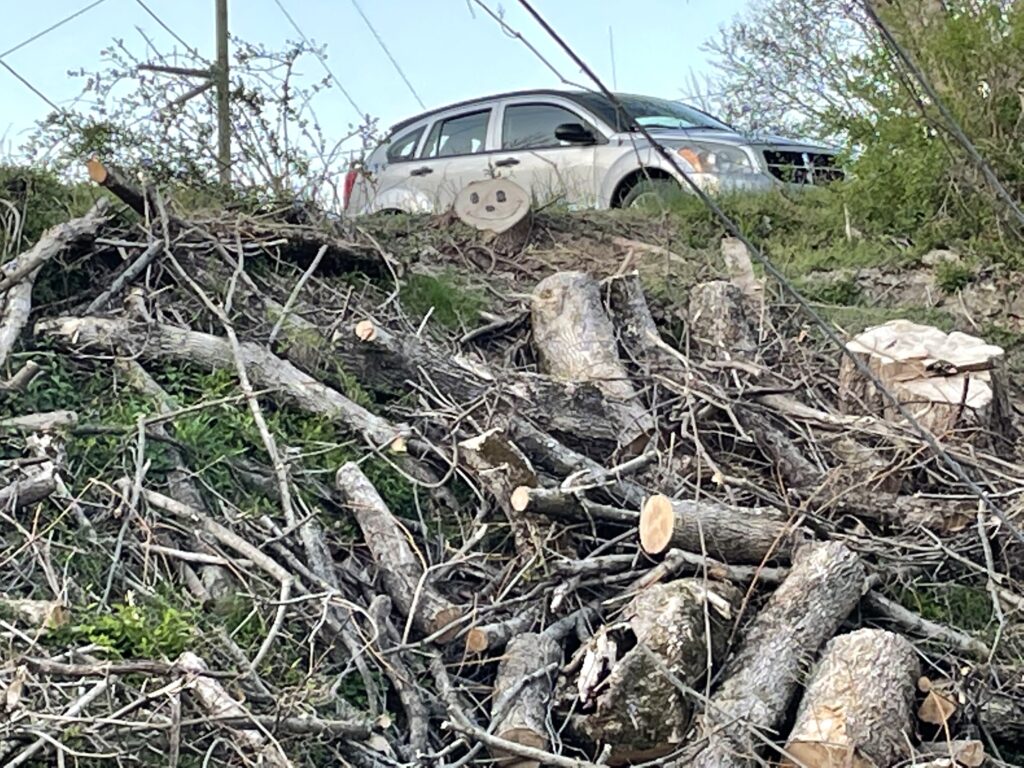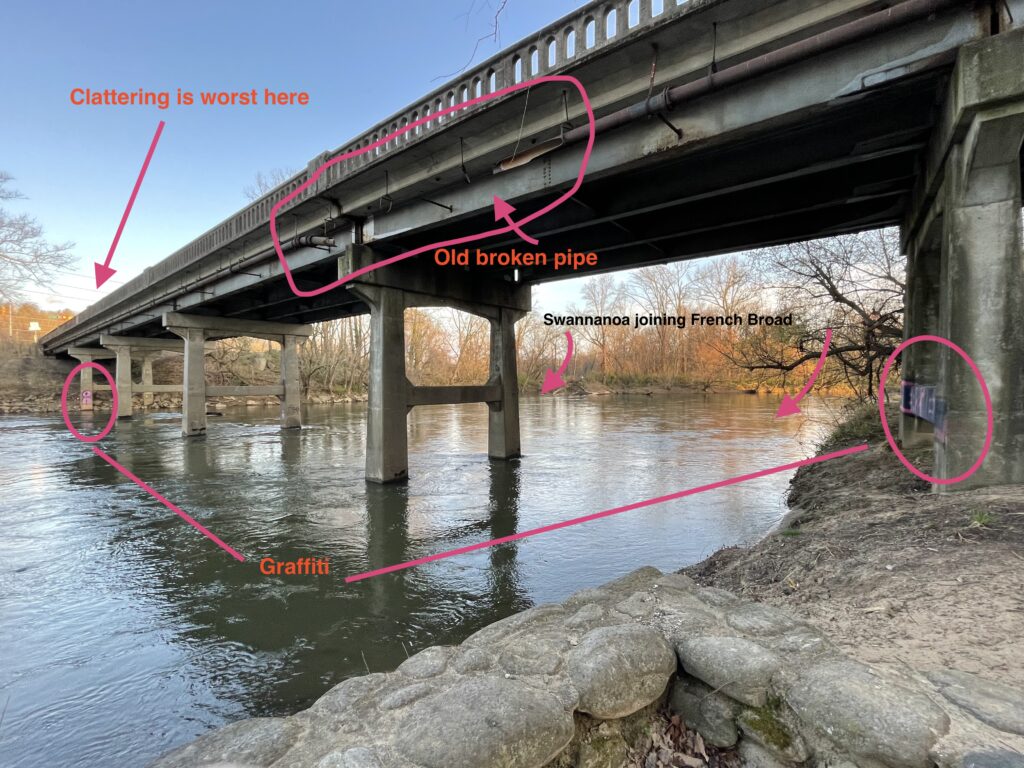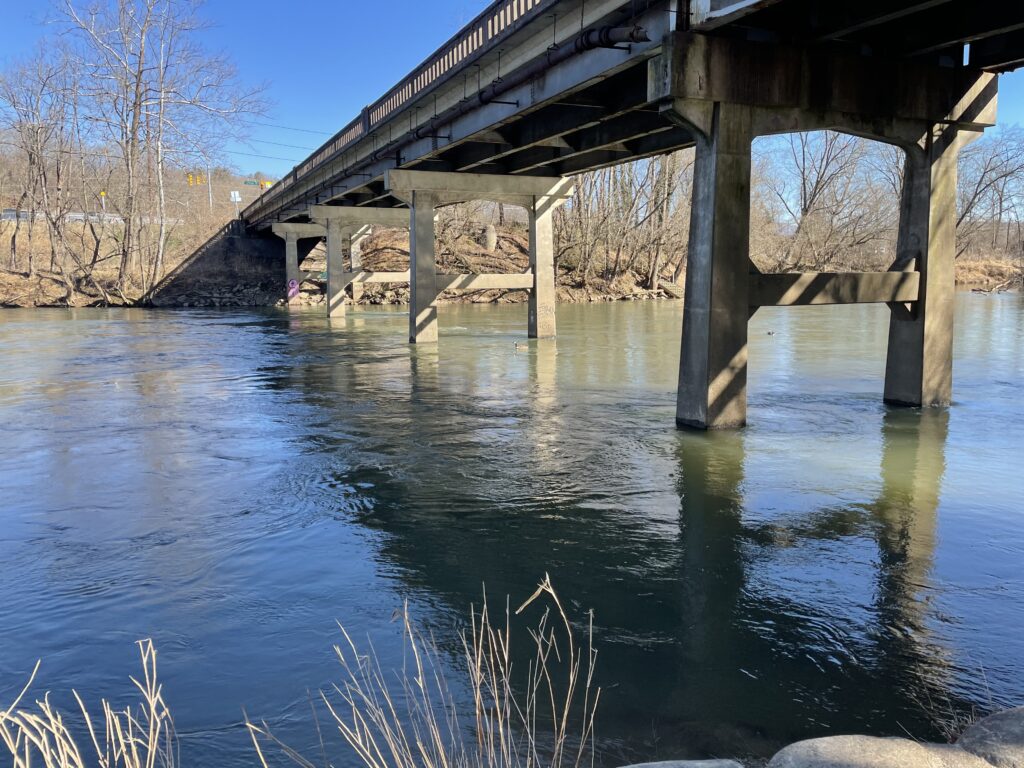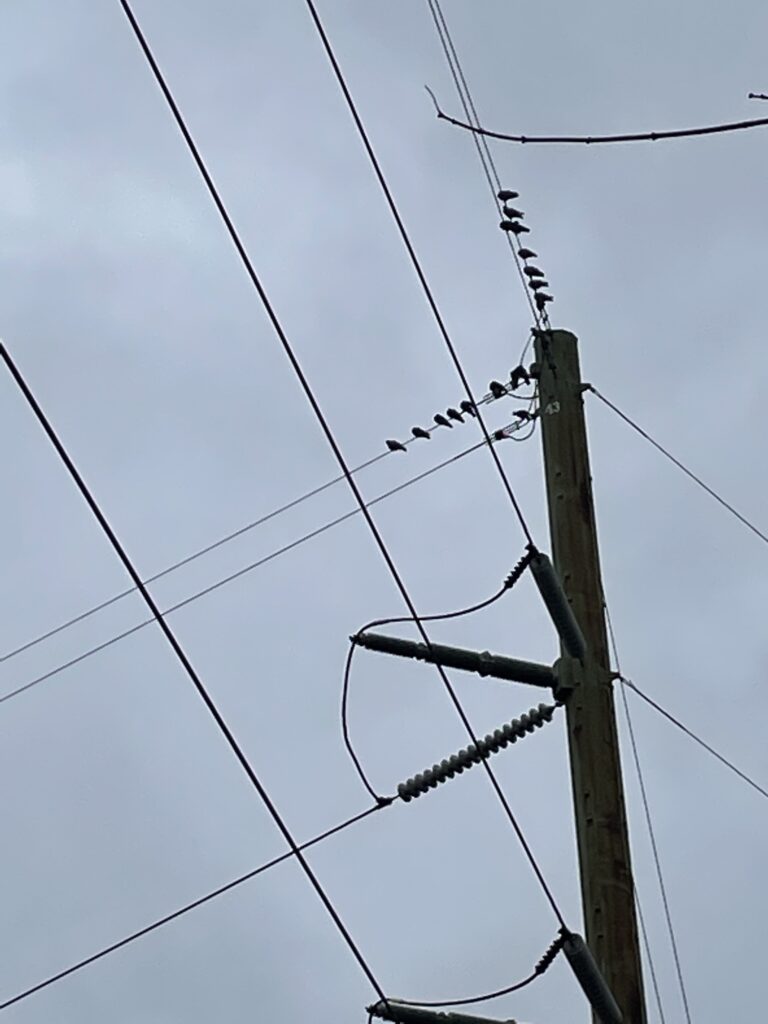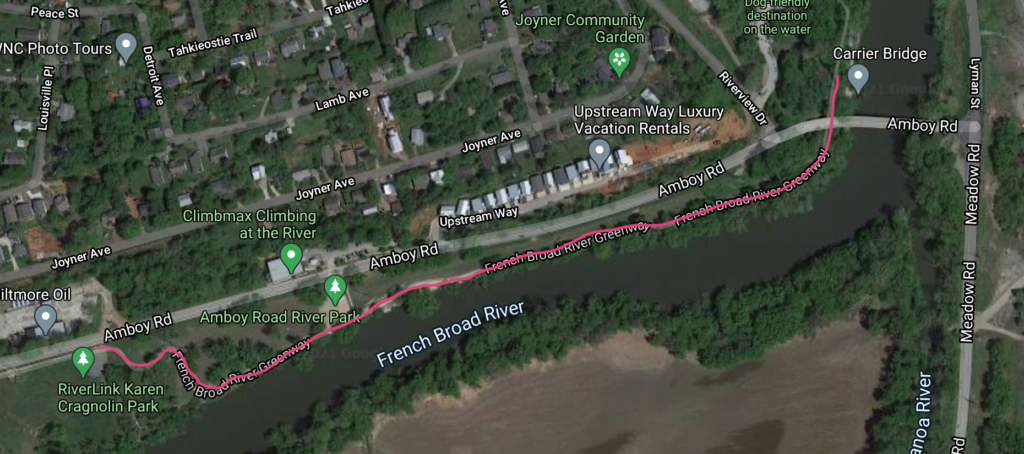I went to my section of the greenway yesterday to see how it was faring with the heavy rain we have been experiencing here in Asheville. I had passed by the section a week earlier and saw that the water was very high, flowing through my section, and completely flooding it. This time, the river was not flowing on top of my section but was still much higher than usual. It was probably a couple of feet higher than usual.
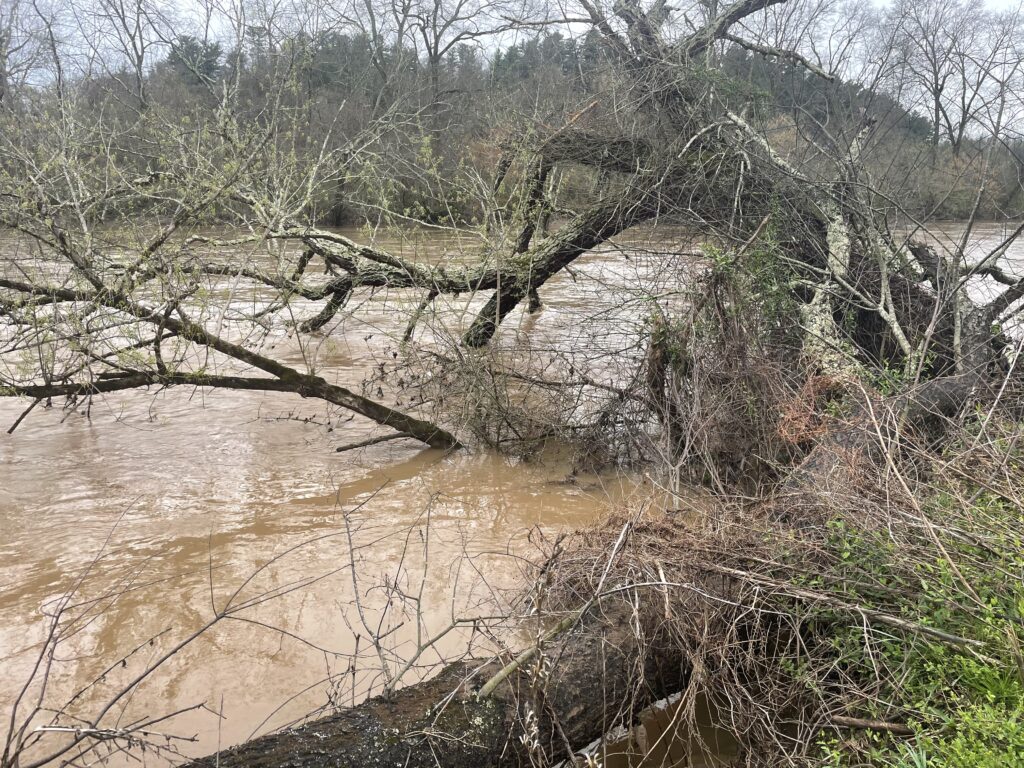
The water was quite murky and brown because of the rain and I saw many things floating down it. I could see multiple places where things that were floating down built up in brush along the sides of the river. Much of the built up debris was trash and tree branches. This reminded me how often things that are left on and in the ground will eventually end up in the water and will float down until they get caught and stuck somewhere else. As well as the trash caught in the river, there was evidence of flooding all over the asphalt path. It was covered in sediment and much of it was a bit slippery. I slid in mud multiple times, but luckily, did not fall into it or the water.
Another neat thing from this outing was that I saw two ducks swimming in the river. They were under a little pier that I was standing on and I saw one swim out and try to swim up river along the bank but stopped and went back. Then both swam out and tried to continue up river, but they struggled to swim upstream because of how fast the water was flowing. They had to fight the current and some brambles along the bank. I tried to follow them and see what they did, but they kept swimming away and then flew away. They were scared of me even though I only wanted to see them. They were Mallard ducks, one male and one female, very likely mates. They seemed worried about my presence and could not swim away fast enough, so they flew away. I was stuck on land and could not follow.
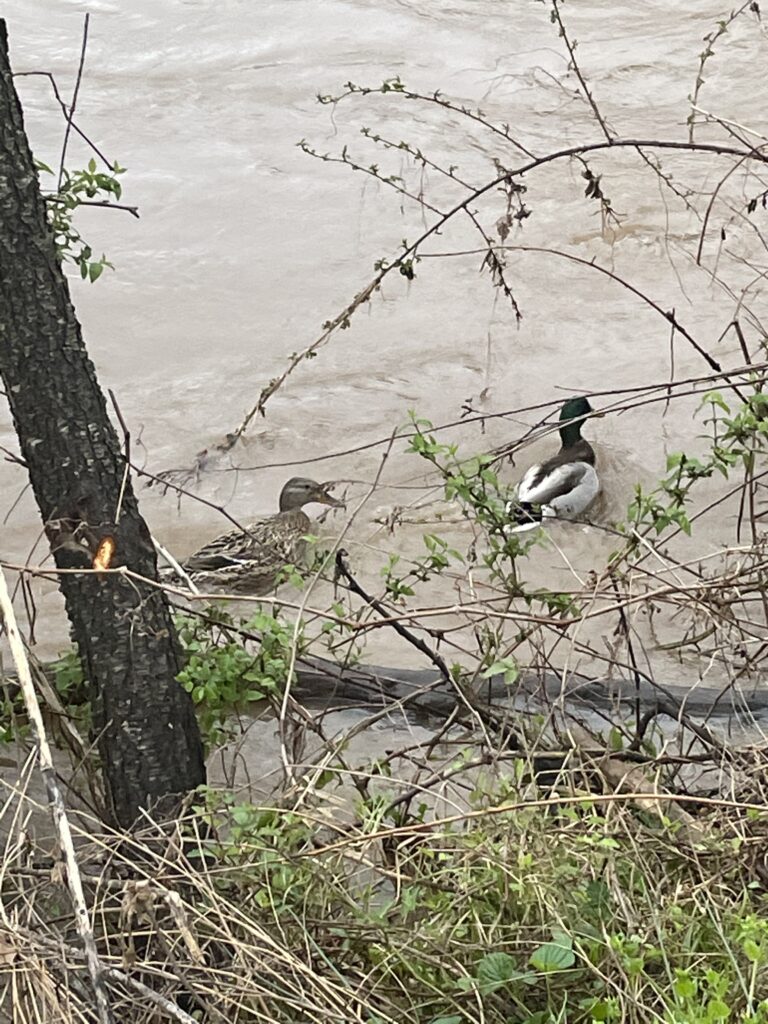
I really enjoy seeing different creatures along the greenway. It’s always mesmerizing to see what creatures are there and what they are doing. Birds have been the prevalent creature I have seen in my section. They have been sitting up in trees or gliding around on the water. I have not seen much of any land dwelling creatures, likely because it has been very cold and because they may be more fearful of other land creatures. Birds can fly or swim away, while a groundhog can only scurry away. I look forward to going to my section more in the future just to enjoy it and see what other interesting creatures and happenings are occurring there.
